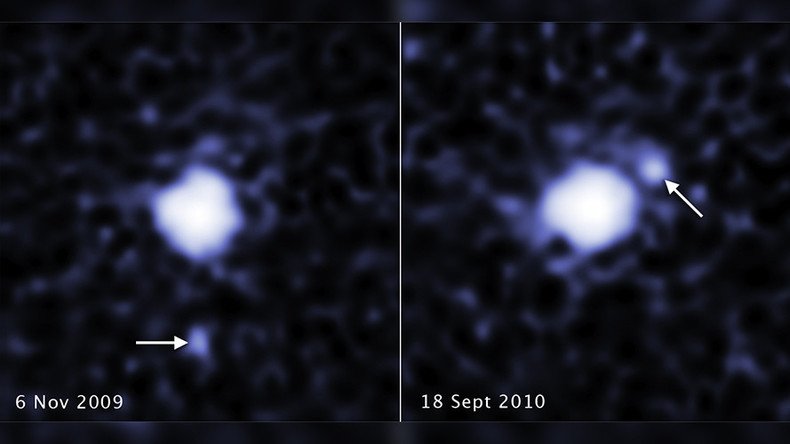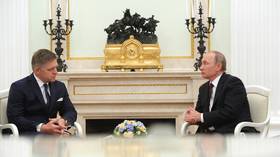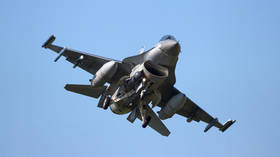Lunar surprise: Astronomers discover moon orbiting ‘Snow White’ dwarf planet

A new study has revealed that the third-largest dwarf planet in our solar system has its own moon.
Researchers used three different space observatories to confirm that dwarf planet 2007 OR10, which is nicknamed “Snow White,” is orbited by a moon.
Snow White is a 1,530 kilometer-wide (950 mile) dwarf planet, while the new moon has been measured at between 240 to 400 kilometers (150-250 miles) in diameter. They are located in the frigid Kuiper Belt, on the outskirts of our solar system, beyond Neptune.
The moon was spotted in archival images of Snow White taken by NASA’s Hubble telescope. Observations of the dwarf planet by the agency’s Kepler Telescope first alerted astronomers to the possibility of a moon circling it.
#Hubble helps astronomers uncover a moon orbiting the third largest dwarf planet in our solar system- 2007OR10!https://t.co/MFe4CMv4rcpic.twitter.com/5da1aXZXKC
— Hubble (@NASAHubble) May 18, 2017
Dwarf planets resemble small planets but they lack certain technical criteria that are required to be classed as such.
The discovery means that astronomers have now found moons orbiting most of the known dwarf planets in the Kuiper Belt. This latest discovery provides researchers with valuable clues into how moons formed in the young solar system.
“The discovery of satellites around all of the known large dwarf planets – except for Sedna – means that at the time these bodies formed billions of years ago, collisions must have been more frequent, and that's a constraint on the formation models,” said Csaba Kiss of the Konkoly Observatory in Budapest, Hungary. "If there were frequent collisions, then it was quite easy to form these satellites,” Kiss added.
Scientists theorize that the objects most likely slammed into each other more often because the region was crowded. The speed of the colliding objects also played a key role as it could not have been too fast or too slow.
If the impact velocity was too fast, the collisions would have created lots of debris that could have escaped from the system; too slow and only an impact crater would have been produced.
READ MORE: ‘Feathery’ alien clouds gather over Saturn’s moon Titan (PHOTOS)












